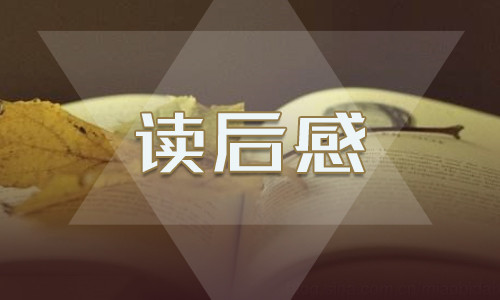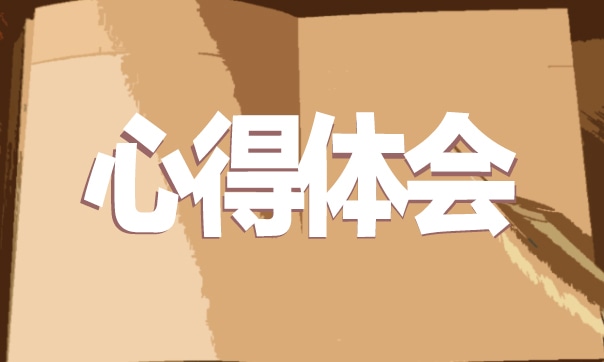小学英语基础知识总汇
一、考点单词详解:
1. a, an的选择: 元音字母开头的单词用an,辅音字母开头的单词用a. 2 am , is , are的选择: 单数用is , 复数用are. I 用 am , you 用 are.
3 have , has 的选择: 表示某人有某物。单数用has , 复数用have. I ,you 用 have . 4. there is, there are 的选择:表示某地有某物,某人。单数用there is , 复数用there are. 5. some, any 的选择:肯定句用some, 疑问句和否定句用any.
6. 疑问词的选择:what (什么) who (谁) where (哪里) whose (谁的) why(为什么)when(什么时候)which(哪一个)how old (多大) how many (多少)how much(多少钱) 二:形容词比较级详解
当我们需要对事物作出比较时,需要用到比较级。比较级的句子结构通常是: 什么 + 动词be (am , is , are ) + 形容词比较级 + than(比)+ 什么 ,如: I'm taller and heavier than you. (我比你更高和更重。)
An elephant is bigger than a tiger. (一只大象比一只老虎更大。) 形容词的比较级是在形容词的基础上变化而来的,它的变化规则是: ① 一般的直接在词尾加er ,如 tall - taller , strong - stronger , ② 以e结尾的,直接加r ,如 fine – finer ,
③ 以辅音字母加y结尾的,先改y为i再加er,如funny - funnier
④ 双写最后的字母再加er,如big – bigger, thin – thinner ,hot – hotter ☆注意☆ 比较的两者应该是互相对应的可比较的东西。
典型错误:My hair is longer than you.(我的头发比你更长。) 比较的两者是我的头发、你(整个人),那么比较的对象就没有可比性。
应该改为:My hair is longer than yours. 或My hair is longer than your hair. 比较级专项练习一、从方框中选出合适的单词完成句子heavy tall long big (1) How ______ is the Yellow River?
(2) How _______ is Mr Green? He's 175cm. (3) How ________are your feet? I wear size 18. (4)How ______is the fish? It's 2kg. 二、根据句意写出所缺的单词
(1) I'm 12 years old. You're 14. I'm _____than you. (2) A rabbit's tail is_______than a monkey's tail. (3) An elephant is ______than a pig. (4) A lake is ______than a sea.
(5) A basketball is ______than a football. 三、根据中文完成句子.
(1)? 我比我的弟弟大三岁. I'm _________than my brother.
(2)? 这棵树要比那棵树高. This tree_____________ than that one. (3)? 你比他矮四厘米. You are __________ than he. (4)? 谁比你重? __________________ than you? 四、根据答句写出问句
(1) ________________________________________ I'm 160 cm.
(2) ________________________________________ I'm 12 years old. (4) ________________________________________ Amy's hair is 30 cm long.
三:动词过去式详解动词的过去式的构成规则有: A、规则动词
①一般直接在动词的后面加ed如 worked , learned , cleaned , visited ②以e结尾的动词直接加d如 lived , danced , used
③以辅音字母加y结尾的动词要改y为i再加ed(此类动词较少)如 study – studied carry )stay、play( worried – carried worry –. ④ 双写最后一个字母(此类动词较少)如 stopped
B、不规则动词(此类词并无规则,须熟记)小学阶段要记住以下动词的原形和过去式:sing – sang , eat – ate , see – saw , have – had , do – did , go – went , take – took , buy
– bought , get – got , read – read ,fly – flew , am/is – was ,
are – were , say – said , leave – left , swim – swam , tell – told , draw – drew , come
– came , lose – lost , find – found , drink – drank , hurt – hurt , feel – felt 四:动词现在分词详解 动词的ing形式的构成规则:
①一般的直接在后面加上ing , 如doing , going , working , singing , eating ② 以e 结尾的动词,要先去e再加ing ,如having , writing
③ 双写最后一个字母的(此类动词极少)有:running , swimming , sitting , getting 五:人称和数
人称代词(主格) 宾格 物主代词
第一人称 单数 I(我) me my(我的) 复数 we(我们) us our(我们的) 第二人称 单数 you(你) you your(你的) 复数 you(你们) you your(你们的) 第三人称 单数 he(他) him his(他的) she(她) her her(她的) it(它) it its(它的) 复数 they(他们/她们/它们) them their(他们的/她们的/它们的) 六:句型专项归类
肯定句:是指用肯定的语气来陈述的句子,
如:I'm a student. She is a doctor. He works in a hospital.
There are four fans in our classroom. He will eat lunch at 12:00. I watched TV yesterday evening.
2、否定句:含有否定词或表示否定意义词的句子,如:I'm not a student. She is not (isn't) a doctor.
He does not (doesn't) work in a hospital. There are not (aren't) four fans in our classroom.
He will not (won't) eat lunch at 12:00. I did not (didn't) watch TV yesterday evening.
☆注意☆ 小结:否定句主要是在肯定句的基础上加上了否定词 “not”。有动词be的句子则“not”加在be后面,可缩写成“isn't,aren't”,但am not 一般都分开写。没有动词be的句子则要先在主要动词的前面加上一个助动词(do,does,did),然后在它后面加上“not”,你也可以把它们缩写在一起如“don't , doesn't , didn't )。这三个助动词要根据人称和时态来选择,其中“does”只用于一般现在时主语是第三人称单数的情况,而“did”只用于一般过去时,不论主语是什么人称和数,都用“did” 。
3、一般疑问句:是指询问事实的句子,此类句子必须用“yes”,或“no”来回答。如:Are you a student? Yes, I am / No, I'm not.
Is she a doctor? Yes, she is. / No, she isn't.
Does he work in a hospital? Yes, he does. / No, he doesn't.
Are there four fans in our classroom? Yes, there are. / No, there aren't.
Are you going to buy a comic book tonight? Yes, I am. / No, No, I am not. (Yes, we are. / No, we aren't.)
Will he eat lunch at 12:00? Yes, I will. / No, I will not(won't). Are they swimming? Yes, they are. / No, they aren't.
Did you watch TV yesterday evening? Yes, I did. / No, I didn't. ☆注意☆ 小结:一般疑问句是在肯定句的基础上,
①把动词be调到首位,其他照写,末尾标点符号变成问号即可。
)再把紧跟在后面的动did,does,do的句子则要在句首加上一个助动词(be②没有动词 词变回原形,末尾标点符号变成问号即可。
这三个助动词也要根据人称和时态来选择,其中“does”只用于一般现在时主语是第三人称单数的情况,而“did”只用于一般过去时,不论主语是什么人称和数,都用“did” 。一般疑问句有个重要的原则就是问和答要一致,即问句里的第一个单词(助动词)和简略答句里的这个词是一致的。
4、特殊疑问句:以特殊疑问词(what , where , who , which , when , whose , why , how等)开头引导的句子。此类句子应该问什么就答什么,不能用“yes 、no”来回答。如: What is this? It's a computer. What does he do? He's a doctor.
Where are you going? I'm going to Beijing.
Who played football with you yesterday afternoon? Mike. Which season do you like best? Summer.
When do you usually get up? I usually get up at 6:30. Whose skirt is this? It's Amy's.
Why do you like spring best? Because I can plant trees. How are you? I'm fine. / I'm happy.
How did you go to Xinjiang? I went to Xinjiang by train.
☆其中how又可以和其他一些形容词连用组成特殊疑问词组用来提问,如: how many(多少(数量)), how much(多少(钱)), how tall(多高), how long(多长), how big(多大), how heavy(多重)
例句:How many pencils do you have? I have three pencils. How many girls can you see? I can see four girls.
How many desks are there in your classroom? There are 51.
用来提问可数名词的数量,主要有以上三种句式搭配,how many ☆小结: How many + 名词复数 + do you have? 你有多少……? How many + 名词复数 + can you see? 你能看见多少……? How many + 名词复数 + are there…? 有多少……?
七:完全、缩略形式: I'm=I am he's=he is she's=she is they're=they are you're=you are there's=there is they're=they are can't=can
not don't=do not doesn't=does not isn't=is not aren't=are not let's=let us won't=will not I'll=I will wasn't=was not
总结:通常情况下,'m即am,'s即is(但 let's=let us), 're即are ,n't即not (但can't=can not)
八:名词所有格
在英语中,特别是表示有生命的名词,可以在后边加's表示所属关系,名词的这种形式被称之为名词的所有格。常见的名词所有格的构成有哪些呢?请看: 分类 's 所 有 格 规则 's 单数名词在末尾加 例词 the girl's mother 那个女孩的妈妈 Want Mei's ruler王梅的尺子 以s结尾的可数名词复数,在末尾加's Teachers' Day 教师节 the students'books学生们的书 以s结尾的人名,在末尾加's或是' Dickens's / Dickens' novels狄更斯的小说 表示各自的所有关系,各名词末尾均须's Lucy's and Lily's bikes 露西和莉莉的自行车 加 表示共同所有关系时,最后一词末尾加's luck and Lily's bedroom 露西和莉莉的卧室 of 所有 格 ,所有格后、表示“某人家”“某店铺” 的名词省略. +of+“名词名词”构成所有格 of 我叔叔家my uncle's the butcher's 肉店 the window of the room这个房间的窗户 the life of the rich 有钱人的生活 所重双 有格 of's以及在同一名词词组中同时具备 两种所有格 a friend of my father's我爸爸的一个朋友 九、反身代词 人称代词 人 称 单 数 第一人称 我 主格 I 宾格 me 物主代词 形容性 物主代词 my 名词性 物证代词 mine myself 反身代词 复 数
第二人称 你 第三人称 他 她 它 you he she it you him her it us you them your his her its our your their yours his hers its ours yours theirs yourself himself herself itself ourselves yourselves themselves 第一人称 我们 we 第二人称 你们 you 第三人称 他她 它们 they
Pep小学英语总复习单词归类表 学习用品 (school things)
pen钢笔 pencil铅笔 pencil-case铅笔盒 ruler尺子 bag包 eraser橡皮 comic book漫画书 schoolbag书包 book书 crayon蜡笔 Chinese book语文书 notebook笔记本 dictionary词典 magazine杂志 story-book故事书 newspaper报纸 sharpener卷笔 post card明信片 English book英语书 math book数学书 人体 (body)
foot脚 head头 face脸 hair头发 nose鼻子 mouth嘴 eye眼睛 ear耳朵 arm手臂 hand手 finger手指 leg腿 tail尾巴 颜色 (colours)
red红 blue蓝 yellow黄 green绿 white白 pink粉红 purple紫 orange橙 brown棕 black黑 动物 (animals)
cat猫 dog狗 pig猪 duck鸭 rabbit兔 horse马 elephant大象 fish鱼 bird鸟 eagle鹰 snake蛇 mouse老鼠 ant蚂蚁 beaver海狸 bear熊 donkey驴 goose鹅 deer鹿 monkey猴 goat山羊 squirrel松鼠 panda熊猫 lion狮子 tiger老虎 fox狐狸 zebra斑马 hen母鸡 giraffe长颈鹿 turkey火鸡lamb小羊 sheep绵羊 cow奶牛 squid鱿鱼 lobster龙虾 shark鲨鱼 seal





